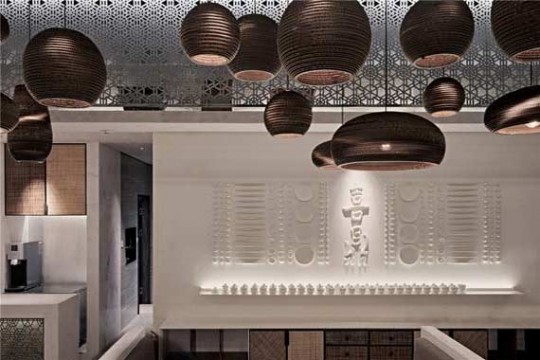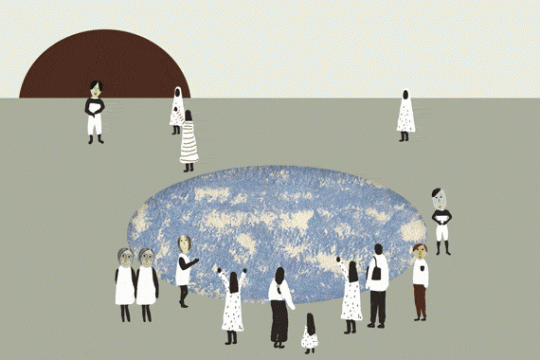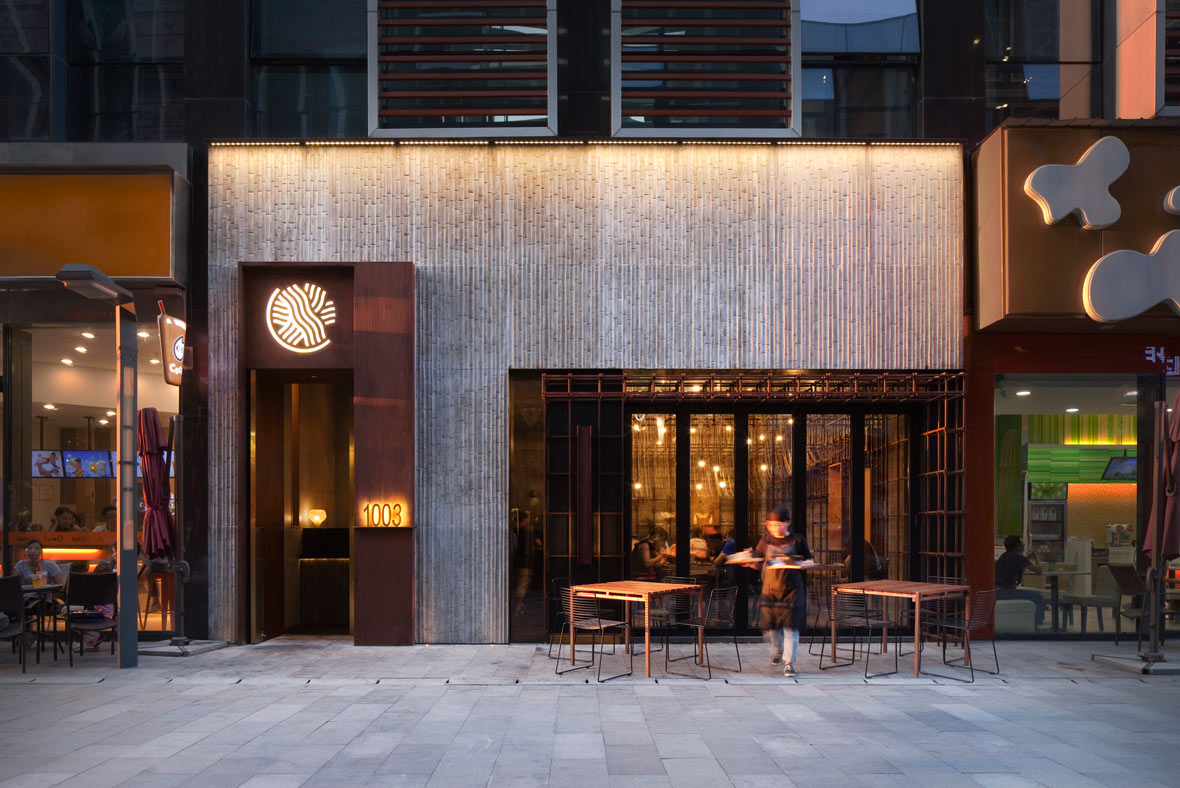
Noodle soup is a common street food that is all over China. While most noodle joints spend a tremendous amount of effort to win over customers with the taste of their noodle soup, some have also started to incorporate attractive and modern store designs in their marketing strategy. One good example is Longxiaobao, a newcomer who recently set foot in Changsha with the ambition to spread their local Shaoyang-style rice noodles to the rest of China. Commissioned to come up with a contemporary identity and design for Noodle Rack, incidentally also their first restaurant client, Lukstudio integrates the tradition of noodle-making in the spatial design of the store’s interiors by reinterpreting the noodle rack.
面条是中国随处可见的街头小吃。大部分面馆都仅在口味上费尽工夫以赢得客户,然而另一些品牌却已将优质的店铺设计视为不可或缺的成功秘方,隆小宝就是其中之一。这个新团队在长沙小试牛刀,力图把钻研多时的地道邵阳米粉推广到中国各地。芝作室受邀为其打造品牌创始店,为了将传统制面工艺引入到空间设计中,用现代语汇重新诠释了“晾面架”这一元素。
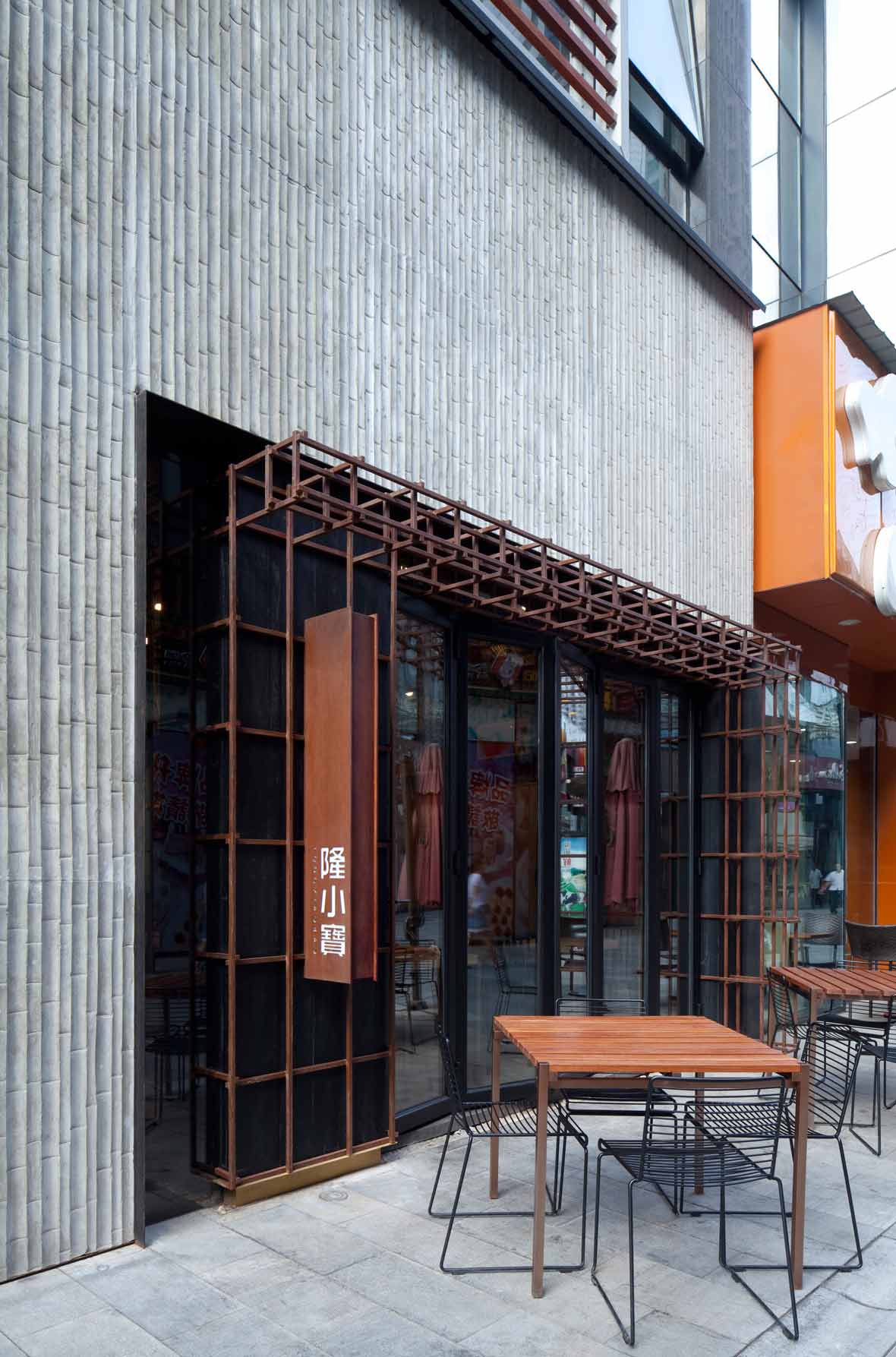
Nestled along an outdoor shopping promenade near the Xiangjiang River, the compact noodle joint exudes a calm yet mysterious presence with a bamboo-cast concrete storefront. Two rustic steel boxes penetrate through the solemn exterior: the taller one is cladded with rusted steel panels, while its shorter neighbour is constructed like a metal scaffold. These three elements together are visually orchestrated to suggest a journey of discovery.
湘江畔的购物大道上,这间小巧的面馆有一个宁静而引人入胜的店面。竹子倒模浇筑的混凝土外立面上,两个相映成趣的钢盒子穿墙而出:左边略高的一个看起来比较冷静封闭,右边的有脚手架一样繁复的面孔。三个元素并置在一起,为食客揭开入店探索的旅程。
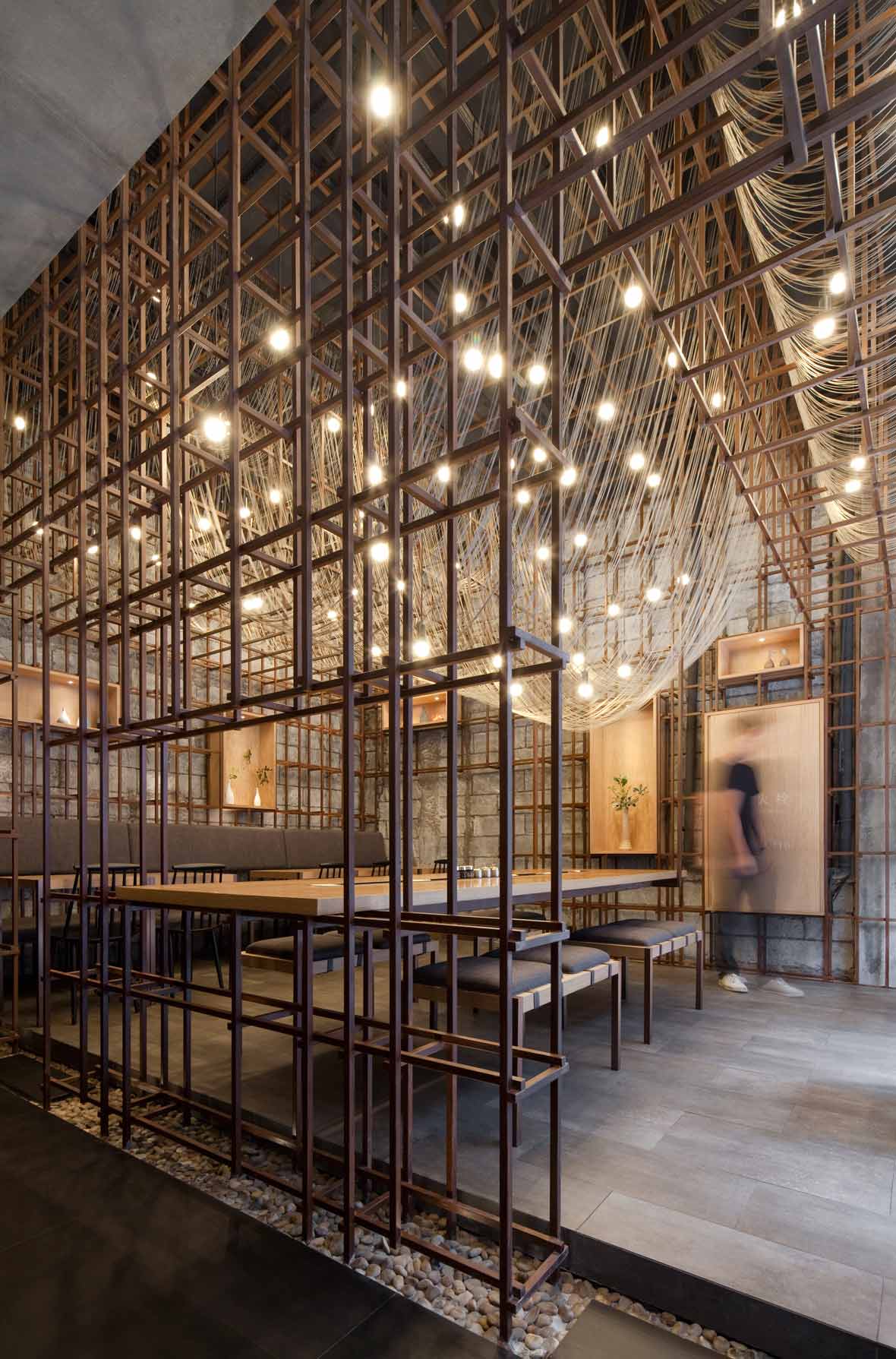
Walking through the entrance, a customer is greeted by a well-composed counter design lined with a bamboo mold used for casting the exteriors. As one proceeds towards the halo surrounding the grid structure, the interior layers start revealing themselves. Firstly, the original wall is stripped down to its structural blocks to resonate with the rustic metal grid. Secondly, wooden boxes are carefully placed within the rack to showcase selected porcelains. Finally, a series of metal wires are draped across the dining room to create a dramatic lighting feature with hanging bulbs. Balanced with the rustic interiors, these reflective strands create a poetic notion of dining under a noodle rack.
从左侧盒子进入店内,首先来到一个简约内敛的空间:前台嵌缀着曾用于浇筑混凝土的竹模,与外立面相呼应,水泥素墙衬托着由橡木盒子和点单屏幕组成的背景墙。转身步入用餐区,围绕着铁架子的光晕将空间的丰富层次展开:墙体原本的砖块与水泥结构得以露出,与铁架子共同营造粗矿的背景;层层叠叠的铁架子中,精心布置的木盒子展示着光洁的瓷器;一束束细密的钢丝‘面条’优雅地垂挂着,微微映着灯泡的暖光,成为整个空间的亮点。每一处的细微用心都是为了引起客人在晾面架下进餐的诗意联想。
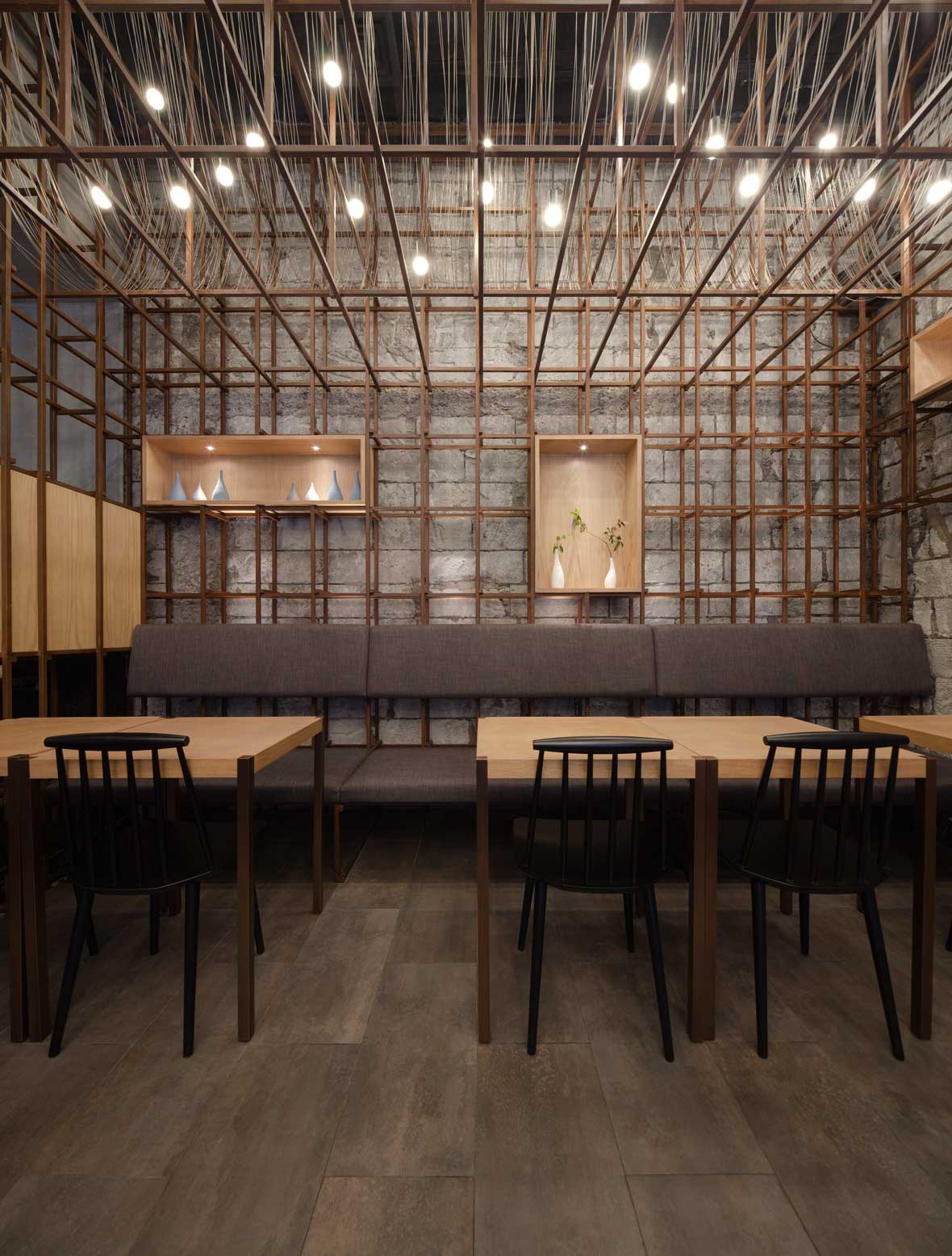
Playing with the duality between rustic and refined, eastern tradition and western representation, Lukstudio introduces a crossover between a fast food chain and an upscale diner. Noodle Rack differentiates itself from the stigma of a kitsch fast food “hole in the wall” on every street of China. It demonstrates just how Chinese eateries can also have the potential to be reborn into hip gathering spots not unlike the ubiquitous café.
粗糙质朴和细腻精致,东方传统和现代诠释,芝作室通过这样的融合让店铺成为连锁快餐和高档餐厅的混合体。这个项目改变大众对平常面馆环境简陋低劣的偏见,展示传统中式美食店也有潜质成为像咖啡厅一样令人流连忘返的场所。
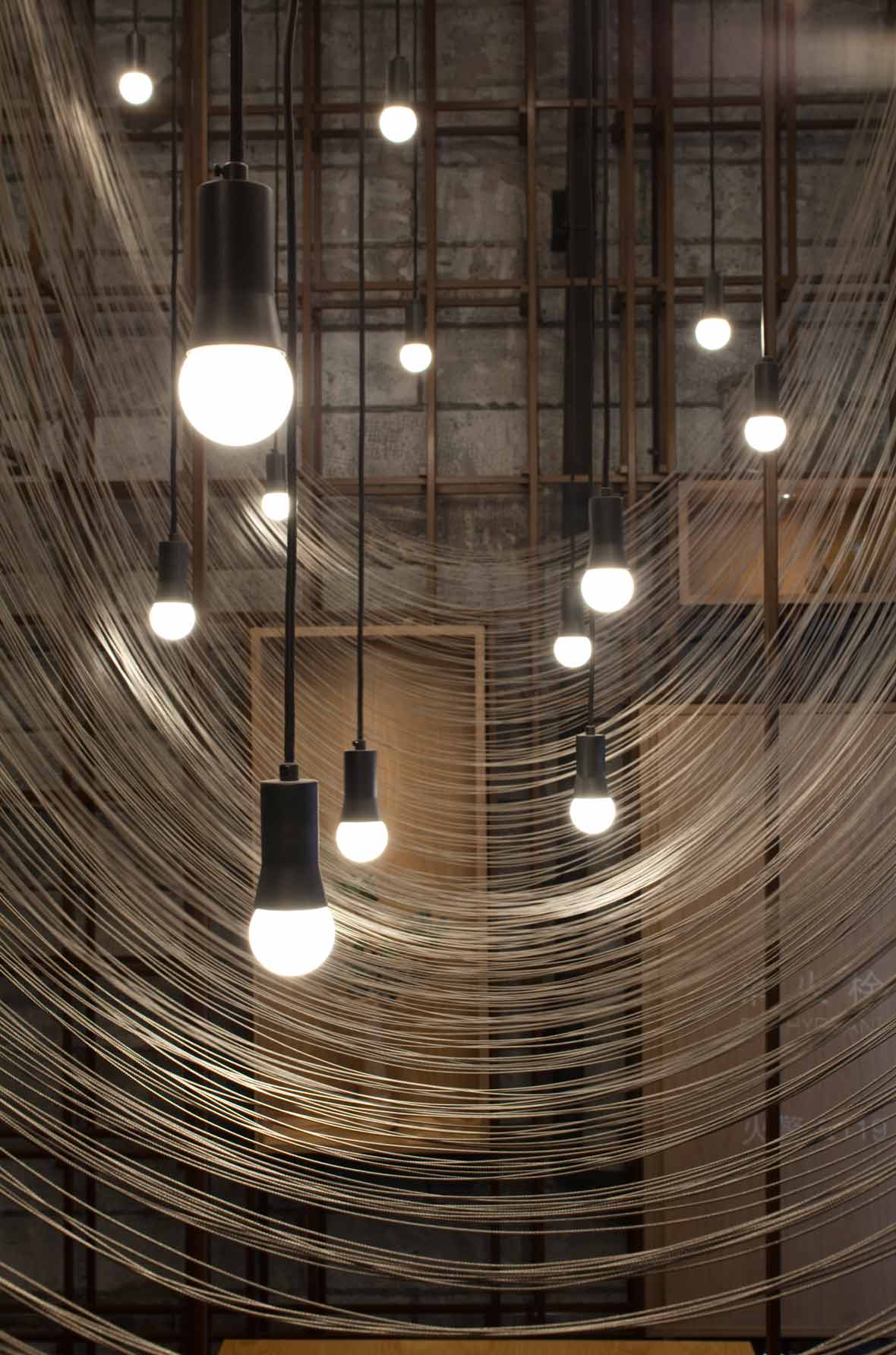
Website: lukstudiodesign.com
Contributor: Leon Yan
Photos Courtesy of LOTAN Architectural Photography



